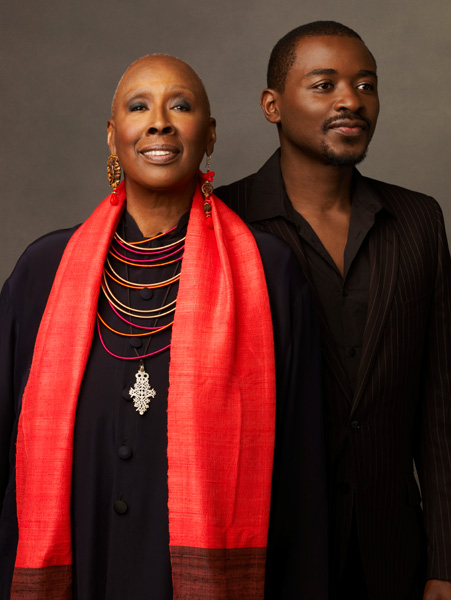Judith Jamison, a legend in the world of dance, comes to Stanford on Jan. 10
"Dancing is bigger than the physical body," says Jamison, director of America's most successful modern dance troupe, the Alvin Ailey American Dance Theater. "You're dancing spirit."
Judith Jamison is one of the greatest figures in American dance - a legend renowned for her charisma, power and artistry as both a dancer and choreographer.
The 67-year-old artistic director of the Alvin Ailey American Dance Theater retires this summer after half-a-century of dancing. But first, she's coming to Stanford.
At 7 p.m. Monday, Jan. 10, Jamison will appear in Cubberley Auditorium for a conversation with Harry Elam, Stanford's vice provost for undergraduate education. The event is free and open to the public. The talk, part of the Stanford Presidential and Endowed Lecture Series in the Humanities and Arts, is sponsored by the Office of the President and administered by the Stanford Humanities Center.
Earlier in the day, Jamison will conduct a master class with dancer Matthew Rushing, the rehearsal director for the Ailey company, followed by a discussion with Jamison.
Philadelphia-born Jamison studied with master teacher Marion Cuyjet and was discovered by dancer/choreographer Agnes de Mille, a member of the famous theatrical dynasty. Jamison debuted with the American Ballet Theatre in 1964.
The following year, she joined the Alvin Ailey American Dance Theater, a company inspired by Southern black culture and renowned for its focus on representing human transcendence in dance. Ailey created some of his most enduring roles for his acclaimed star - notably the 16-minute tour-de-force solo Cry.
She left the company in 1980 to star in the hit Broadway musical Sophisticated Ladies, based on Duke Ellington's music. She appeared as a guest artist in ballet companies throughout the world and began choreographing her own works. In 1988, she formed her own company, the Jamison Project. A PBS special, Judith Jamison: The Dancemaker, aired the same year.
The commanding, 5-foot-10 dancer was appointed artistic director of the Alvin Ailey American Dance Theater in December 1989. She had been handpicked by Ailey before his death.
The Ailey company began as a home for black dancers who couldn't get jobs in the predominantly white dance world; Jamison continued its transition to perhaps the world's most successful modern-dance troupe. Under her leadership, a $1 million deficit was turned into a $25 million endowment, and the company built its permanent home in midtown Manhattan - an eight-floor, $56 million headquarters that is the largest building in the country devoted to dance.
"I don't feel as though I'm standing in anyone's shoes. I'm standing on Alvin's shoulders. The horizons become broader. He was an individual. However, we shared the same spiritual traditions," Jamison wrote in her 1993 autobiography, Dancing Spirit. "That's why I stayed with the company for 15 years: We were walking the same path, that's why we had such a special connection."
She received the Kennedy Center Honors for lifetime contributions to American culture in 1999 and the National Medal of Arts in 2001. She won an Emmy Award and an American Choreography Award for outstanding choreography for the PBS Great Performances: Dance in America special, "A Hymn for Alvin Ailey."
Jamison was honored at a White House tribute last year, when Michelle Obama called her "Alvin Ailey's muse" and "a visionary in the world of dance," and noted that "her shooting star connected with Alvin's."
"For years, I have gone to watch Judith's company wherever and whenever I can," Obama said at the event, adding that she took her daughters with her "because I want them to witness the grace and the beauty that stirs our souls and connects us to each other like nothing else can."
The first lady also said that a picture of Jamison performing Cry used to be the only art hanging in the Obama household.
Obama cited from Jamison's 1993 autobiography: "Dancing is bigger than the physical body. Think bigger than that. When you extend your arm, it doesn't stop at the end of your fingers, because you're dancing bigger than that. You're dancing spirit."
Media Contact
Cynthia Haven, Stanford News Service: (650) 724-6184, [email protected]


Share This Story